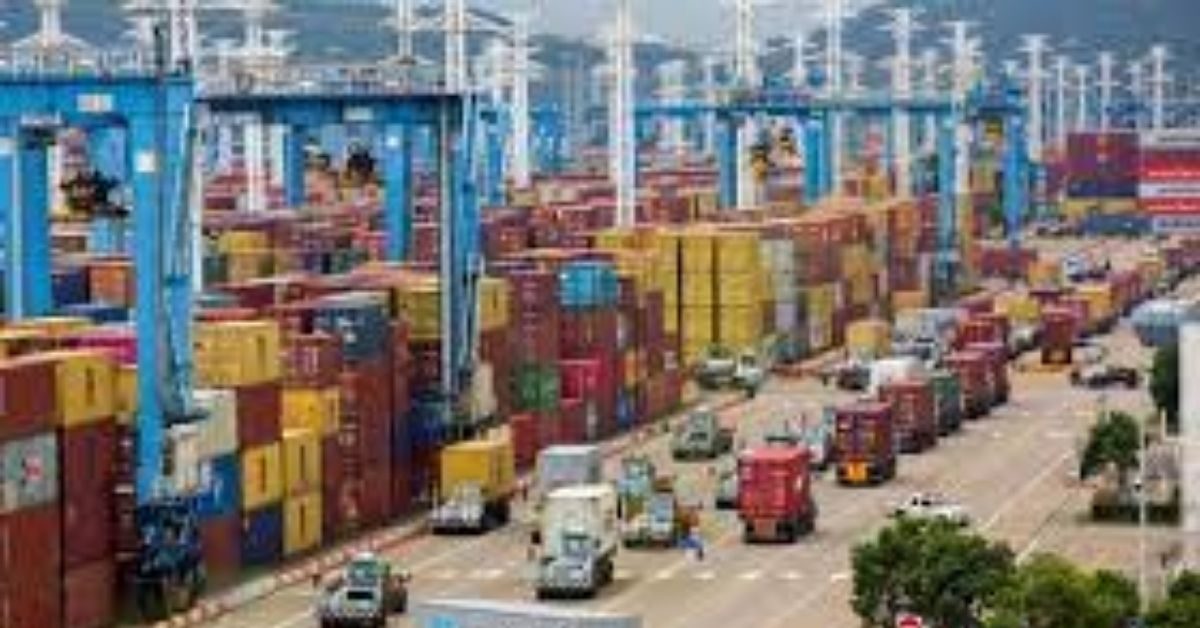Consumer goods and appliances makers are stocking up imported materials fearing supply-chain snags on account of prolonged port congestion. Ports globally remain congested as they clear backlogs of shipping containers stranded on docks amid restrictions and with workers falling ill, five-six industry executives BloombergQuint spoke with said. Fresh curbs because of mounting Omicron cases and the Lunar New Year in China when factories shut for up to four weeks worsened the woes. Shipments are delayed by an average of 10-30 days.
“Supply chains are getting affected with shipment time going up and this is likely to remain till end-February as China closes due to the New Year,” Krishnarao Buddha, senior category head at Parle Products Pvt., told BloombergQuint. The Parle-G biscuit maker imports raw materials such as cocoa powder, coffee beans, orange oil used in cream biscuits, flavours and seasoning, among others.
The company, he said, has kept buffer stocks ready. Companies usually place large inventory orders in advance to ensure enough supply to cover this holiday period. They are doing it this time, too, even amid higher freight costs and mounting stockpiles. But lack of space for cargo on ships because of high demand and container shortage is prompting delays.
Angshu Mallick, chief executive officer at Adani Wilmar Ltd., said the goods that took 30 days to receive are taking up to 45 days. The maker of Fortune edible oil is holding a 30-day inventory. Mallick, however, doesn’t expect any shortage unless there are stricter curbs due to Covid-19 or any other extraordinary issues in major sources of imports such as Malaysia, Ukraine, Argentina and Brazil.
“Vessel loading, dispatch and delivery of goods within India are still relatively stable, while issues in international markets are causing major delays,” he said. “As far as outbound shipments are concerned, cargos are taking longer than usual time to move mainly due to unavailability of containers.” Wonderchef is seeing a delay of 10-15 days in imports. “Forecasting availability of containers has become a challenge as shipments are getting delayed even after loading the goods,” said Ravi Saxena, managing director and co-founder of the kitchen cookware maker.
The supply-chain distress started two years back when the Covid-19 pandemic struck, forcing economies around the world to close borders. The Suez Canal blockage, bulk buying by China, labour issues in Malaysia and unpreparedness of ports to handle massive volumes further battered the system. The holdup on ship movement prompted a container crisis over much of last year.
“Port congestion in Europe and the U.S. continues to slow the return of boxes to Asia, stymieing the recovery of global ocean supply chains,” Christian Roeloffs, founder and chief executive at Container xChange, told BloombergQuint. The New Year and partial lockdowns across key ports in China, which is the epicenter of container manufacturing and supply in general, will have another round of ripple effect on supply chain, he said.
“If we look at the U.S., the ports of Long Beach and Los Angeles—the U.S. gateway for Asian imports—have been struggling to keep up with many ships waiting to unload cargo filled in thousands of containers.”
Soaring Shipping Rates
According to Container xChange’s Roeloffs, a spike in shipping demand ahead of factory closures for the Lunar New Year holidays would reduce the availability of containers and slots and further increase costs. A 20-feet dry container that cost $800 and a 40-feet dry container that was available for $1,200 pre-pandemic, now cost on an average $2,250 (Nhava Sheva Port) and $5,200 (Chennai), respectively, Roeloffs said.
BloombergQuint awaits responses to queries sent to Chennai port and Jawaharlal Nehru Port. According to Tarun Pathak, director at Counterpoint Research, higher container prices could also increase the cost for the domestic smartphone industry—dependent on China for components. “Input prices are likely to firm up further as OEMs [original equipment manufacturers] try bringing extra shipments of components ahead of the New Year,” said Pathak. While there may not be any major shortage of raw materials, the supply-chain snarls could lead to pushback of shipments by a couple of weeks, he said.
Source: Bloomberg Quint







